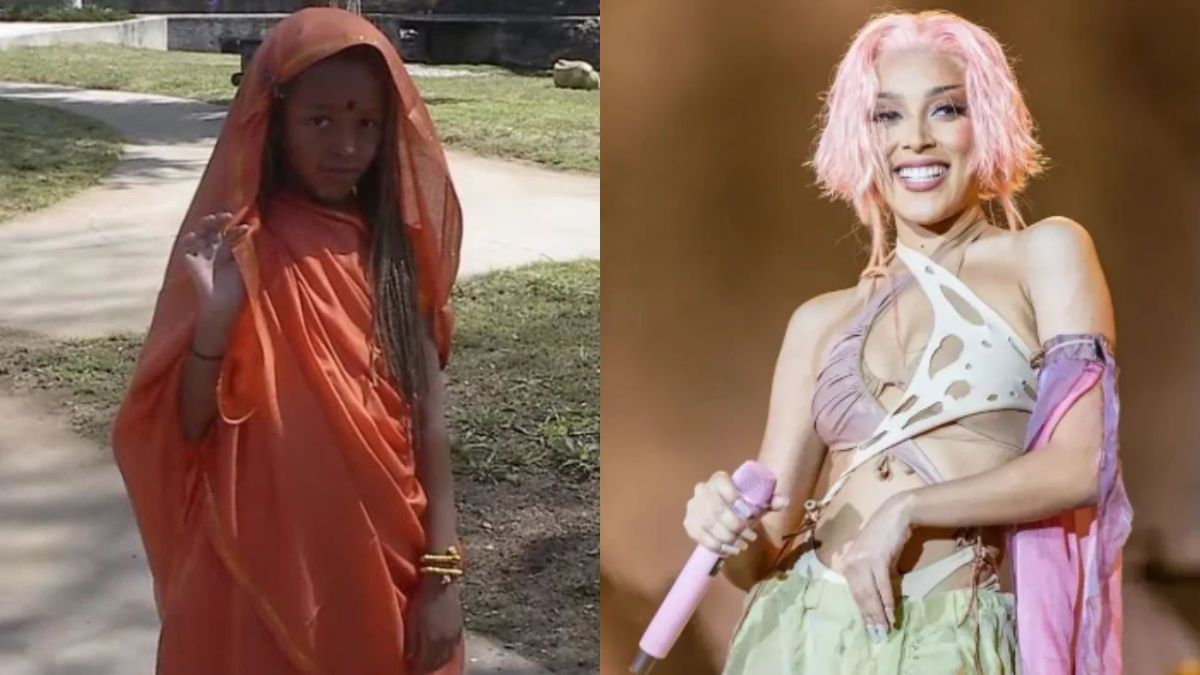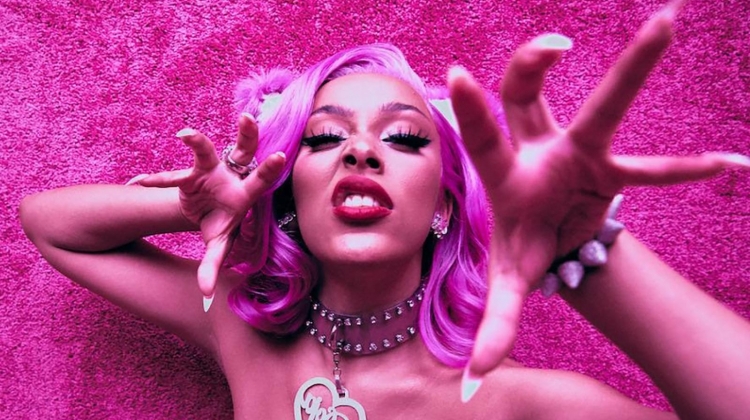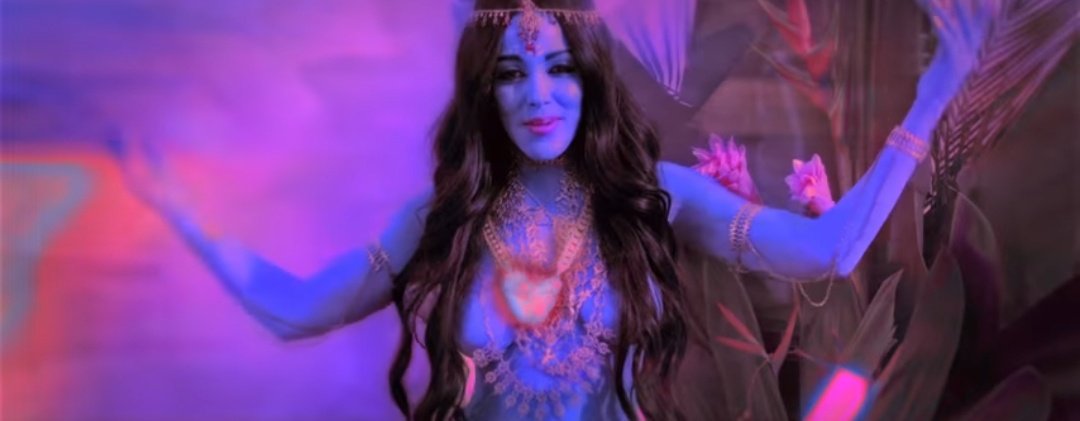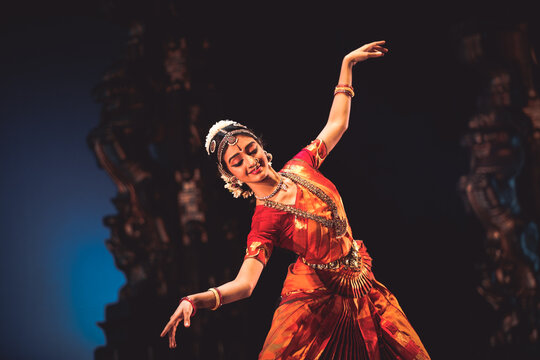You read that right! American pop singer-songwriter and rapper Doja Cat, who has released many hits like Woman, Need to Know and more has her roots in the classical Indian dance form Bharatanatyam.

Doja Cat’s childhood Hindu Influence
She and her family resided in a California ashram during her childhood days, run by jazz musician Alice Coltran, where she learned Bhajans, Bharatanatyam and practiced Hinduism. She lived in New York for 5 years before she moved to California where she began taking dance lessons.

Under the mentorship of Alice Coltran she adorned orange headscarves that denoted Hindu symbolism, along with learning hymns and chants at the temple, rooted in the traditions of Hinduism. But due to restrictive Hinduism norms she did not continue this practice for long.
Her experience with Bharatanatyam
Commenting on her experience with the classical Indian dance form she has mentioned “Indian classical dance Bharatanatyam; it’s very emotional and it’s a lot about angles like creating shapes with your body.”

She has also mentioned “I feel like it taught me to be emotive and control my body in a special way”.
Doja Cat’s Career Path
After discontinuing her Bharatanatyam practice, she joined a professional pop-locking ensemble in high school and took part in various dance performances in Los Angeles. Pop locking is a funky dancing form that originated in the 1960s. Subsequently, she got singing lessons from her aunt, who was a professional singer. This aided her admission to a performing arts high school.

Global Influence of Hindu Culture
The influence of Indian culture has been evident in the world since the early ages and it can be seen in the recent times as well. In Doja Cat’s song video ‘So High’ she is seen dressed as a fantasized version of a hindu god.
Even in first world countries like the USA where many other regional and international dance forms are prominently pursued, the classical Indian dance forms like Bharatanatyam and Kathak have solicited their own space.

Bharatanatyam is a Tamil Nadu-based classical dance style. Prior to the arrival of the British, it was regarded a sacred dancing form, a part of religious ritual. Devadasi, who employed singing and dancing as a form of worship and temple duty, performed it. The dance was originally known as “Sadir Natyam” at the time.
Doja Cat will be releasing her highly anticipated new album called Hellmouth sometime soon this year.

